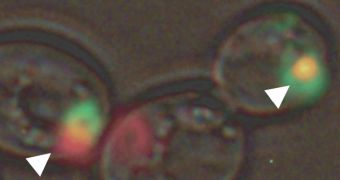Scientists know that Huntington's disease is partially caused by a protein called huntingtin, which is modified from its usual self via a genetic mutation. A new study reveals that the proteins huntingtin encounters inside nerve cells can lead to reactions that promote the condition.
After a large number of analyses, experts figured out that a mutation in the Huntingtin gene causes the protein huntingtin to be expressed differently. Unlike its usual self, the modified molecule contains an extended region featuring the amino-acid glutamine.
Scientists have linked this region to the onset of Huntington's disease, a condition that progressively damages nerve cells in the brain, leading to increasing deterioration of cognitive and mental abilities. Patients experience impaired movements, and eventually death.
Doctors have been struggling to find ways of addressing this disease, but thus far with limited success. What the new research found is that huntingtin is not solely responsible for producing negative effects on individual nerve cells.
The environment within these cells – the totality of proteins within their cellular membranes – is also very important, since it can either augment or subdue the activity of huntingtin. The finding was made by experts based at the Georgia Institute of Technology (Georgia Tech).
Previously, scientists thought that the length of huntingtin's amino-acid expansion was the only factor determining the severity of the disease. Now, they know that prions (protein aggregates already in the cells when huntingtin enters) play a role too.
“This study clarifies genetic and epigenetic mechanisms that modulate polyglutamine’s toxicity on cells and establishes a new approach for identifying potential therapeutic targets through characterization of pre-existing proteins in the cell,” Georgia Tech School of Biology professor, Yury Chernoff, explains.
“While this study was conducted in yeast, it is possible that there are differences in aggregated proteins present in human cells as well, which are causing variation in huntingtin toxicity among individuals,” the investigator goes on to say.
He says that the work was sponsored by a grant from the US National Institutes of Health (NIH) and the Hereditary Disease Foundation. A paper detailing the findings was published in the April issue of the open-access journal PLoS Genetics.
Researchers now plan to see whether a similar correlation can be identified in human patients as well.

 14 DAY TRIAL //
14 DAY TRIAL //